#says 'java macaque'
Explore tagged Tumblr posts
Text
There’s a MONKEY on Craigslist
#WHAT#says 'java macaque'#which google says is probably a crab-eating macaque?#WHY DO THEY HAVE A MONKEY#she's 1 year old and they're trying to ask $5000 for her#WHY DO YOU HAVE A MONKEY#WHY DID YOU PUT IT ON CRAIGSLIST
27 notes
·
View notes
Photo

The Sad Clown by Joan de la Malla, Spain
Timbul, a young long-tailed macaque, puts his hand to his face to try to relieve the discomfort of the mask he has to wear. His owner is training him to stand upright so that he can add more stunts to his repertoire (Badut on his hat means clown). Macaque street shows are banned in several cities, but still take place in Indonesia. Joan spent a long time gaining the trust of the monkey owners in Surabaya, Java. ‘They are not bad people,’ he says, ‘They just need other opportunities to make a living.’
15 notes
·
View notes
Text
What Things Do Jacksonville, NC
Jacksonville, North Carolina, is a trivial yet sprightly town, best known as the adobe of the prevalent Marine Corps base on America’s eastern seaboard. Jacksonville also relishes some stunning beaches. The town played a stimulating role during the Civil War, and the great place to cram about it is at the CSS Neuse Civil War Interpretive Center says Brent Emerson North Carolina.

Lejeune Memorial Gardens has numerous memorials to the Americans who have dropped in dissimilar fights around the world. If you are wandering with kids, take them to explore the wild animals at the zoo. Here are a few things you can do in Jacksonville, North Carolina:
Lynnwood Park Zoo
It is an animal park that feasts over 10 acres of land, with a half-acre pond and a famed picnic area. Established in 1990, the zoo is the only park of its kind in the city and features more than 80 animal demonstrations, with a huge range of species such as reptiles, mammals, birds, and others.
Some of the most prevalent mammals are zebra, grey fox, pygmy goat, grivet monkey, Java and rhesus macaques, and many others. The reptile show comprises the American alligator, corn snake, Burmese python, king snake, eastern box turtle, blue-tongued skink, savannah monitor, and others says Brent Emerson North Carolina. The most vital birds retained here are the barred owl, redtail hawk, emu, red golden pheasant, and others.
Hammocks beach state Park
Situated on the North Carolina coast, the core of the vast Hammocks Beach State Park is the well-known Bear Island. This wild, immature, about 3-mile-long Barrier Island is a paradise for weekenders, who come to relish the extensive sandy beach strained between enormous ancient dunes and the Atlantic ocean. The park has a well-organized tourist center, which also obliges as the gateway to the island and as the port for the ferry service as well as canoes or kayaks. The island is home to numerous nesting shorebirds and threatened sea turtles emphasis Brent Emerson North Carolina.
NC Maritime Museum, Beaufort
This Museum in Beaufort is one of the three maritime museums that reserve North Carolina’s maritime history – fishing, piracy, the seafood industry, boat building, marine life, underwater archeology, and much more. The museum in Beaufort reflects native coastal life, lifesaving stations, motorboats, lighthouses, and the seafood industry. This museum features varied artifacts including cannons, beads, grenades, and belt buckles. Besides enduring exhibitions, there are visiting demonstrations such as the new one on surfing in North Carolina.
Tryon Palace
It is a lovely Georgian manor constructed in 1770 by Royal Governor William Tryon as North Carolina’s first state capitol. The former Governor’s Mansion, encircled by 14 acres of stunningly landscaped gardens, is today a famous history museum with a lot of historic houses. This whole complex can be visited by hiring well-trained history guides says Brent Emerson North Carolina. Tourists can also adore collaborative living history demonstrations. The North Carolina History Center is the latest addition to the historic edifices and is residence to the Regional History Museum, rotating visiting demonstrations, rare artifacts, and a nice waterfront restaurant.
Originally Posted: https://brentemersonorthcarolina.wordpress.com/2021/06/24/what-things-do-jacksonville-nc/
0 notes
Text
The Pioneering Female Botanist Who Sweetened a Nation and Saved a Valley
https://sciencespies.com/history/the-pioneering-female-botanist-who-sweetened-a-nation-and-saved-a-valley/
The Pioneering Female Botanist Who Sweetened a Nation and Saved a Valley

In 1970, the Indian government planned to flood 8.3 square kilometers of pristine evergreen tropical forest by building a hydroelectric plant to provide power and jobs to the state of Kerala. And they would have succeeded—if it weren’t for a burgeoning people’s science movement, buttressed by a pioneering female botanist. At 80 years old, Janaki Ammal used her status as a valued national scientist to call for the preservation of this rich hub of biodiversity. Today Silent Valley National Park in Kerala, India, stands as one of the last undisturbed swaths of forest in the country, bursting with lion-tailed macaques, endangered orchids and nearly 1,000 species of endemic flowering plants.
Sometimes called “the first Indian woman botanist,” Ammal leaves her mark in the pages of history as a talented plant scientist who developed several hybrid crop species still grown today, including varieties of sweet sugarcane that India could grow on its own lands instead of importing from abroad. Her memory is preserved in the delicate white magnolias named after her, and a newly developed, yellow-petaled rose hybrid that now blooms in her name. In her later years, she became a forceful advocate for the value and preservation of India’s native plants, earning recognition as a pioneer of indigenous approaches to the environment.
Edavaleth Kakkat Janaki Ammal was born in 1897, the tenth in a blended family of 19 brothers and sisters in Tellicherry (now Thalassery) in the Indian state of Kerala. Her father, a judge in a subordinate court system in Tellicherry, kept a garden in their home and wrote two books on birds in the North Malabar region of India. It was in this environment that Ammal found her affinity for the natural sciences, according to her niece, Geeta Doctor.
As she grew up, Ammal watched as many of her sisters wed through arranged marriages. When her turn came, she made a different choice. Ammal embarked on a life of scholarship over one of matrimony, obtaining a bachelor’s degree from Queen Mary’s College, Madras and an honors degree in botany from the Presidency College. It was rare for women to choose this route since women and girls were discouraged from higher education, both in India and internationally. In 1913, literacy among women in India was less than one percent, and fewer than 1,000 women in total were enrolled in school above tenth grade, writes historian of science Vinita Damodaran (and Ammal’s distant relative) in her article “Gender, Race, and Science in Twentieth-Century India.”
After graduating, Ammal taught for three years at the Women’s Christian College in Madras before receiving a unique opportunity: to study abroad for free through the Barbour Scholarship, established at the University of Michigan by philanthropist Levi Barbour in 1917 for Asian women to study in the U.S. She joined the botany department as Barbour Scholar at Michigan in 1924. Despite coming to America on a prestigious scholarship, Ammal, like other travelers from the East, was detained in Ellis Island until her immigration status was cleared, her niece writes. But mistaken for an Indian princess with her long dark hair and traditional dress of Indian silks, she was let through. When asked if she was in fact a princess, “I did not deny it,” she said.
During her time at the University of Michigan she focused on plant cytology, the study of genetic composition and patterns of gene expression in plants. She specialized in breeding interspecific hybrids (produced from plants of a different species) and intergeneric hybrids (plants of a different genera within the same family). In 1925, Ammal earned a Masters of Science. In 1931, she received her doctorate, becoming the first Indian woman to receive that degree in botany in the U.S.
Her expertise was of particular interest at the Imperial Sugar Cane Institute in Coimbatore, now the Sugarcane Breeding Institute. The Institute was trying to bolster India’s native sugarcane crop, the sweetest species of which (Saccharum officinarum) they had been importing from the island of Java. With Ammal’s help, the Institute was able to develop and sustain their own sweet sugarcane varieties rather than rely on imports from Indonesia, bolstering India’s sugarcane independence.
Ammal’s research into hybrids helped the Institute identify native plant varieties to cross-breed with Saccharum in order to produce a sugar cane crop better suited for India’s tropical environmental conditions. Ammal crossed dozens of plants to determine which Saccharum hybrids yielded higher sucrose content, providing a foundation for cross-breeding with consistent results for sweetness in home-grown sugarcane. In the process, she also developed several more hybrids from crossing various genera of grasses: Saccharum-Zea, Saccharum-Erianthus, Saccharum-Imperata and Saccharum-Sorghum.
In 1940, Ammal moved to Norfolk, England, to begin work at the John Innes Institute. There she worked closely with geneticist—and eugenicist—Cyril Dean Darlington. Darlington researched the ways that chromosomes influenced heredity, which eventually grew into an interest in eugenics, particularly the role of race in the inheritance of intelligence. With Ammal, however, he mostly worked on plants. After five years of collaboration, the pair coauthored the Chromosome Atlas of Cultivated Plants, which is still a key text for plant scientists today. Unlike other botanical atlases that focused on botanical classification, this atlas recorded the chromosome number of about 100,000 plants, providing knowledge about breeding and evolutionary patterns of botanical groups.
In 1946, the Royal Horticultural Society in Wisley offered Ammal a paid position as a cytologist. She left the John Innes Institute and became the Society’s first salaried woman staff member. There, she studied the botanical uses of colchicine, a medication that can double a plant’s chromosome number and result in larger and quicker-growing plants. One of the results of her investigations is the Magnolia kobus Janaki Ammal, a magnolia shrub with flowers of bright white petals and purple stamens. Though Ammal returned to India around 1950, the seeds she planted put down roots, and the world-renowned garden at Wisley still plays host to Ammal’s namesake every spring when it blooms.

A rose hybrid named in “E.K. Janaki Ammal” in honor of Ammal’s life and work.
(John Innes Centre U.K.)
When she returned to India in the early 1950s, she did so at the request of Jawaharlal Nehru, India’s first Prime Minister after their 1947 independence from British rule. India was recovering from a series of famines, including the Bengal famine of 1943 that killed millions. It was for this reason, Vinita Damodaran tells Smithsonian, that “Nehru was very keen to get [Ammal] back [to India] to improve the botanical base of Indian agriculture.” Nehru made her a government appointed supervisor in charge of directing the Central Botanical Laboratory in Lucknow. In this capacity, she would reorganize the Botanical Survey of India (BSI), originally established in 1890 under the oversight of Britain’s Kew Gardens to collect and survey India’s flora.
But Ammal found herself dissatisfied with some of the initiatives that the government had implemented to boost India’s food production. Under the 1940s Grow More Food Campaign, the government reclaimed 25 million acres of land for the cultivation of food, mostly grain and other cereals. “She found the deforestation was getting quite out of hand, quite rampant,” Damodaran says. Damodaran reads from a letter that Ammal sent to Darlington in which she expressed her distress over the extent to which deforestation was destroying India’s native plants: “I went 37 miles from Shillong in search of the only tree of Magnolia griffithii in that part of Assam and found that it had been burnt down.”
At this point, Ammal’s work took a decidedly different turn. After spending decades applying her skills to improving the commercial use of plants, she began using her influence to preserve indigenous plants under threat. One of Ammal’s goals for the botanical survey was to house plant specimens that had been collected from across the continent in an herbarium in India. She wanted the BSI to be conducted by Indian scientists and kept for India. But in the 60 years since the British first controlled the BSI, she found not much had changed when the government appointed a European, Hermenegild Santapau, as her director, a position that Damodaran says Ammal “felt had been unjustly denied her.”
In another letter to Darlington she expressed both anger and sadness at the decision to appoint Hermenegild. “I bring you news of a major defeat for botanical science in India,” she wrote. “The Govt. of India has appointed as the chief botanist of India—a man with the Kew tradition and I—the director of the Central Botanical Laboratory must now take orders from him … Kew has won … and we have lost.” Despite India’s independence from British rule, Britain’s colonization of the country manifested in science.
Ammal believed a truly systematic study of India’s flora could not be done if the specimens were collected by foreign botanists and then studied only in British herbaria. Damodaran explains, “This was critical to her: how do you create a revitalized botanical survey, in terms of both collection and research, that enables you to do this new flora?”
To that end Ammal issued a memorandum on the survey, writing, “The plants collected in India during the last thirty years have been chiefly by foreign botanists and often sponsored by institutions outside India. They are now found in various gardens and herbaria in Europe, so that modern research on the flora of India can be conducted more intensely outside India than within this country.”
This continues to be a problem today. “The largest collection of Indian plants are held there [at the Kew and the Natural History Museum],” Damodaran says, “It’s still quite an imperial institution.”
To preserve Indian plants, Ammal saw the need to value the indigenous knowledge about them. In 1955 she was the only woman to attend an international symposium in Chicago, ironically entitled Man’s Role in Changing the Face of the Earth. The Symposium interrogated the various ways that humans were changing the environment in order “to keep abreast of all the means at man’s disposal to affect deliberately or unconsciously the course of his own evolution.” In the room full of mostly white men, she spoke about India’s subsistence economy, the significance of tribal cultures and their cultivation of native plants, and the importance of Indian matrilineal traditions that valued women as managers of property, including a family’s plants—all of which were threatened by the mass-production of cereals.
“It is in this sense,” Damodaran writes, “that one can see Janaki Ammal as pioneering both indigenous and gendered environmental approaches to land use whilst continuing to be a leading national scientist.”
In the later years of her career, Ammal lent her voice to a booming environmental movement called Save Silent Valley, a campaign to stop a hydroelectric project that would flood the Silent Valley forests. By the time she joined protesters and activists, she was an established voice in Indian science, and a scientist emeritus at Madras University’s Centre for Advanced Studies in Botany. Joining the movement was a natural outgrowth of her previous decades of work, bringing full circle a scientific life of systematic study and a love of the natural wonders of her country. “I am about to start a daring feat,” she wrote, again to Darlington. “I have made up my mind to take a chromosome survey of the forest trees of the Silent Valley which is about to be made into a lake by letting in the waters of the river Kunthi.”
Harnessing her scientific expertise, she spearheaded the chromosomal survey of the Valley plants in an effort to preserve the botanical knowledge held there. As part of the larger movement, one of the most significant environmental movements of the 1970s, Ammal was successful: the government abandoned the project, and the forest was declared a national park on November 15, 1984. Unfortunately, Ammal was no longer around to see the triumph. She had died nine months earlier, at 87 years old.
In a 2015 article remembering her aunt, Greeta Doctor wrote that Ammal never liked to talk about herself. Rather, Ammal believed that “My work is what will survive.” She was right: though she is relatively unknown in her country, her story is out there, written in the pages of India’s natural landscape. From the sweetness of India’s sugar and the enduring biodiversity of the Silent Valley to Wiseley’s blooming magnolias, Ammal’s work does not just survive, it thrives.
#History
0 notes
Photo
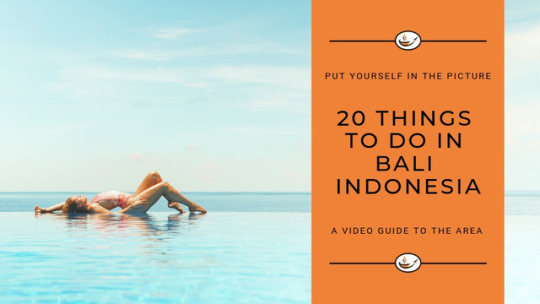
New Post has been published on https://vacationsoup.com/things-to-do-in-bali-indonesia/
20 Best Things to Do in Bali, Indonesia
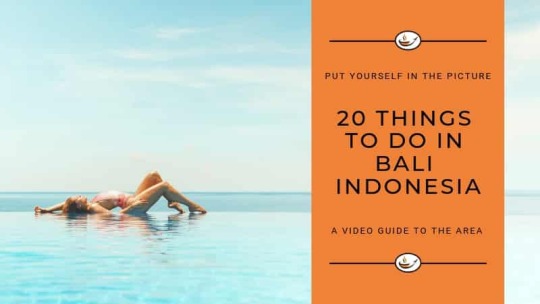
Bali is a little patch of paradise tucked in the heart of the Indonesian archipelago. It is one of the most coveted holiday destinations in Asia, and it’s pretty easy to see why: stunning beaches, a rich tapestry of different cultures, warm and hospitable people, beautiful temples and exotic palaces, mighty volcanoes, and verdant forests.
During the day there are a plethora of exciting activities to do, like surfing and snorkeling, or hiking. Night times in Bali, though, are a different story; as much as it teems with nature’s beauty, it also has a flair for dancing and nightlife. Suffice it to say, whatever your interests are, one could never run out of things to do in this Southeast Asian paradise.
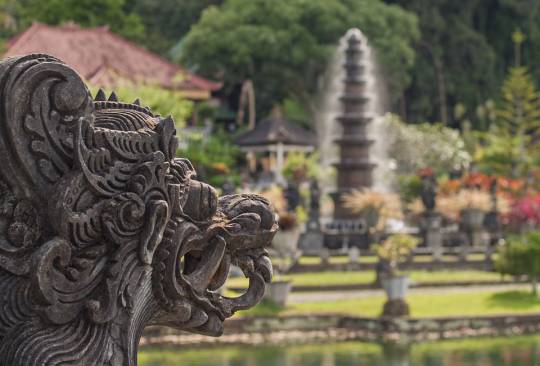
1. Free Things to Do in Bali, Indonesia
Climbing up Mt. Batur
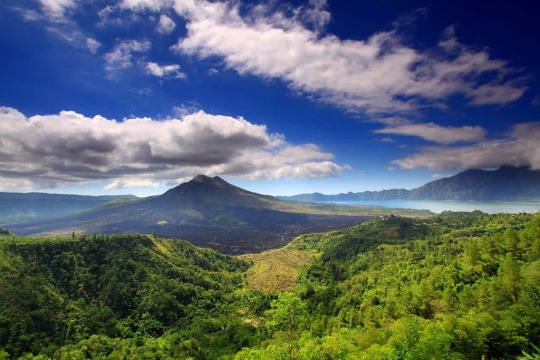
Mt. Batur
Bali is famous for its paradisaical beaches, but its mountains volcanoes are also a thing of splendor. Mt. Batur, one of the county’s most active volcanoes, is a favorite hiking spot in Bali. Towering at almost 1,717 meters, climbing Mt. Batur isn’t an easy feat, but seeing the sun rise at its peak is just absolutely glorious.
It is best to start the excursion two hours before sunrise to reach the summit just in as the sun is starting to rise. You need not worry about breakfast, too. Because Mt. Batur is an active volcano, you get to have a treat of eggs boiled on lava-heated rocks. After the two hours of hiking up the volcano, there is a hot spring nearby where you can take a dip to relax your sore muscles.
youtube
2. Free Things to See in Bali, Indonesia
Monkeys at the Sacred Monkey Forest Sanctuary

Going bananas over some banana
The Sacred Monkey Forest is a sacred Hindu site in Bali, but its population of primates is what attracts a lot of tourists to visit this place. The forest is home to more or less seven hundred long-tailed Macaques, and it is believed that the primates protect the area, as well as the three Hindu temples inside (Pura Dalem Agung, Pura Beji, and Pura Prajapati) from evil spirits. Bear in mind, though, that these monkeys are still in the wild so it is best to observe them from a safe distance. Nevertheless, the forest has other snap-worthy attractions like a verdant forest with over 186 tree and plant species and ancient temples.
youtube
3. Relaxing Things to See and Do in Bali, Indonesia
Tegalalang Rice Terraces

Rice is the staple food of most, if not all, Asian countries, hence it is not totally uncommon to see rice terraces in Asian countries like The Philippines, Vietnam, and Indonesia. One of Indonesia’s rice terraces in Bali, though, is one of the UNESCO World Heritage Sites. It features cascading Emerald-green rice fields that are laboriously tended for by Balinese farmers. This is best visited early in the morning or late in the afternoon when it’s not too hot. One does not need to actually do anything to appreciate this attraction; just breathe in fresh remote island air and marvel at the green beauty of the blooming rice shoots.
youtube
4. Breathtaking Things to See in Bali, Indonesia
Uluwatu Temple
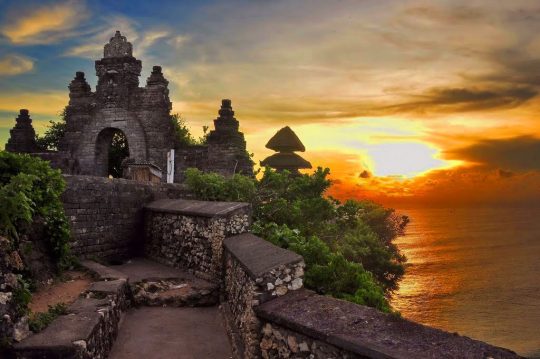
Uluwatu Temple
Uluwatu is an ancient temple that is perched at the top of the coastal cliffs just outside Kuta on Bali’s southwest tip. One of Bali, Indonesia’s most significant and most popular temples, Uluwatu features Ganesha statues that greets visitors who have come to be in awe of the panoramic seaside views, see the monkeys, or enjoy watching a traditional Balinese sunset dance.
The cliff top location makes it an ideal spot even for just sunset watching. There are quite a lot of available Uluwatu Temple day trips, but there are also night tours that include a sumptuous seafood feast at Jimbaran Beach.
youtube
5. Free Things to See and Do in Bali, Indonesia
Tegenungan Waterfall

Days in Bali, Indonesia can be hot, so taking a swim or a dip in Tegenungan Watefall is a welcome idea. The sight alone is impressive enough as the water cascades from black stone cliff 20 meters above and drops down into a quiet pool below.
Aside from that, the area also has some other attractions to offer: climbable cliffs, a charming smaller waterfall, a lovely grotto, and a number of food stalls make hanging out in Tegenungan Waterfull wonderful and convenient.
Keep in mind though, that there are certain restrictions when visiting the waterfalls, as per the safety protocol and cultural prohibitions in the area.
youtube
6. Precious Things to See in Bali, Indonesia
Celuk Village
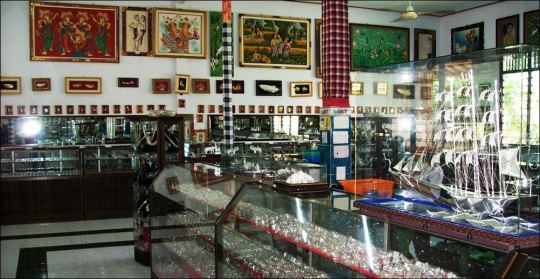
Celuk Village in Ubud is also known as the “silver village” because of their prolific jewelry production. There are a lot of artisans in Celuk Village that design and manufacture their silver and gold jewelry right in their homes and workshops, as they have for centuries. Visiting Celuk Village offers tourists a chance to watch artisans at work and directly buy jewelry from them.
It is possible to tour around the village without a guide but tourists prefer a bundled tour together with the other villages in Ubud. Guided tours usually include the batik village of Tohpati, carving village of Mas, and the crafting village of Batuan.
youtube
7. Relaxing Things to Do in Bali, Indonesia
Sanur Beach

The great island of Bali is peppered with ancient temples and ruins that seem to take you back in time, but did you know that even some of its beaches could give you that vintage feel too? How? Sanur Beach is one of Bali’s first beach resorts, and while technology and global advancements have updated the place a bit, it still has that old school laid-back vibe to it.
Visitors with families and middle-aged vacationers prefer this beach over other party-hearted beaches in Bali because Sanur is calmer and more peaceful—perfect for relaxing and soaking up the Sun and Bali’s local traditions and cuisine.
youtube
8. Beautiful Things to See in Bali, Indonesia
Pura Ulun Danu Bratan

Situated on the shores of Lake Bratan, near the town of Bedugul, Pura Ulun Danu is Bali’s most photographed temple. Similar with Taman Ayun Temple, it is a cluster of multi-roofed shines, so the reflection they cast on the water is just spectacular.
Pura Ulun Danu is accessible by canoe and was built in the 17th century. It measures over four thousand feet above sea level, and is the focus of the foggy Bedugul high terrains on the path to north Bali. There are several Pura Ulun Danu tours available that are bundled with other Balinese water temples, like Tanah Lot and Taman Ayun.
youtube
9. Cultural Things to Do in Bali, Indonesia
Goa Gajah

Goa Gajah is one of Bali’s holiest Hindu sites. It is a grotto with carvings of traditional Balinese mythological creatures. The visitor of Goa Gajah or Elephant Cave is uncertain, but it is assumed that Balinese priests dug it out by hand to be used as their hermitage.
The Goa Gajah is still an active Hindu worship site to this day and the Goa Gajah grotto is still a popular tourist spot in Bali. Tours here starts by entering the gaping mouth of a demon-like creature, and passes through a small chamber with carvings on the walls. Outside the cave entrance features several charming bathing pools in the courtyard.
youtube
10. Exciting Things to See in Bali, Indonesia
USS Liberty Shipwreck

The USS Liberty Shipwreck sits quietly in its resting place just 25 meters from shore and five to thirty meters below sea level. Its position makes the USS Liberty one of the most accessible shipwrecks in the world. It is popular to a lot of novice shipwreck divers, but it is an interesting spot for seasoned divers, too. It is so accessible, that visitors can swim from the shore and arrive at the shipwreck site.
Several species of marine life made the USS Liberty their home and their presence along with military ruins make the shipwreck a beautifully haunting spot to take pictures.
youtube
11. Wild Things to Do in Bali, Indonesia
Wild Rapids at Telaga Waja

Bali is more than just an island with palm trees and romantic walks on spectacular beaches; it also has its wild and adventurous side that most people did not know much about. Visitors and tourists craving from some adrenaline high can get their fix at Telaga Waja with its roaring waters and fourteen kilometers of grade three and four rapids.
Tourists can expect verdant jungle scenery and a couple of hours of paddling like crazy, but what they don’t usually expect is a heart-stopping four meter high waterfall drop, a remarkable story, and bragging rights—if they make it through—once they are back on land.
youtube
12. Breathtaking Things to See in Bali, Indonesia
Devdan Show

The Devdan Show features a bit of Balinese culture and tradition that is a hit for both young and old visitors of the island. It features one and a half hour of Indonesian theatrical culture through the story of two young kids who wandered away from a tour group and came across a treasure chest filled with several items and stuff that take them, as well as the audience, to some of Indonesia’s most coveted islands. The show has a fusion of traditional and modern dances, acrobatics, colorful and meticulously-made costumes, and an interactive stage set-up that highlight Bali, Sumatra, Borneo, Java, and Papua islands.
youtube
13. Fascinating Things to See in Bali
Setia Darma House of Mask and Puppets

Masks and puppets are an important part of Indonesian arts and cultural heritage, so much so that they have an entire museum dedicated to their collection. Setia Darma House of Mask and Puppets is a one-of-a-kind museum that features and aims to preserve this facet of Indonesia’s culture and tradition. This museum houses a diverse collection of ceremonial masks and colorful puppets from all over the country and even from other countries.
The collection of over 1200 masks and 4700 puppets is displayed in a courtyard of renovated joglo, or Javanese wooden structures. The highlights of the museum include puppets used for Wayang Kulit, or shadow puppetry and the eye-catching Jero Luh mask, along with other masks used for topeng dances.
youtube
14. Family-friendly Things to Do in Bali, Indonesia
Bali Botanic Gardens

Bali is home to a plethora of fascinating and beautiful attractions that draw a lot of tourists annually. Nevertheless, it is also home to a few underrated attractions that could and should have made it to the list of Bali’s top destinations. One of those underrated places in Bali is situated in the heart of lakeside Bedugul. Bali Botanic Garden is located right smack dab in the middle of Bali’s cool highlands. It is a beautiful albeit underrated garden where plant lovers enjoy a lovely sight of orchids and endemic Balinese plants, as well as a number of begonias and carnivorous plants totaling to over 2400 species.
Families can also enjoy a thrill out of a zipline ride at Bali Treetop Adventure Park which is also within the garden/park.
youtube
15. Things to Do with Kids in Bali, Indonesia
Lovina
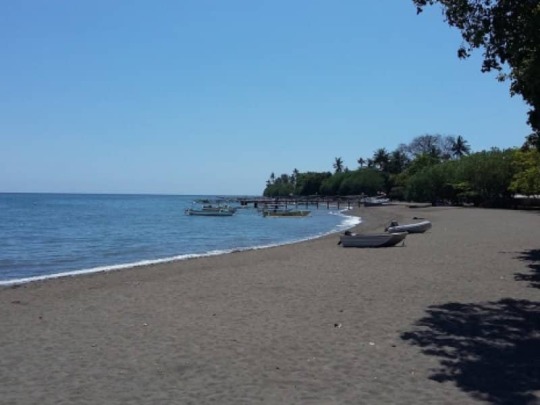
For visitors with families, Lovina is one of the most ideal spots in Bali to spend and enjoy family time in. Lovina is a mellower and more family-centered counterpart of the other buzzing resorts in Bali. Its amenities and packages are also more affordable.
The highlight and main feature of this resort is a sunrise-dolphin watching tour. Nevertheless, guests likewise enjoy basking in the sun on Lovina’s dark sand beaches, snorkeling on the coral reef near Menjangan island which is a couple of hours west, diving, and hiking in the hills outside of town, and exploring other coastal attractions the resort offers.
youtube
16. Delicious Things to Do in Bali, Indonesia
Casa Luna Cooking School
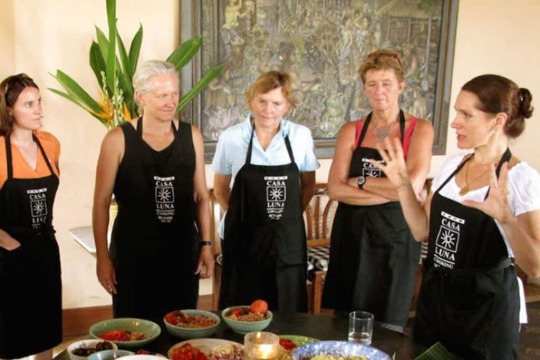
One of the many things that set Bali apart from other Indonesian islands is their distinctive cuisine. Balinese cuisine is actually one of the most intricate in the world. Casa Luna Cooking School offers a glimpse of Bali’s culture, traditions, and beliefs through food and cooking.
Classes at the Casa Luna Cooking School are held on the Second Honeymoon Guesthouse near Ubud. The relationship between food and Balinese society, culinary myths and the ceremonial and religious significance of food in Bali’s culture are among the topics that are also discussed in the classes. They also provide class notes and recipes for each participant to take home.
youtube
17. Free Things to See and Do in Bali, Indonesia
Tampak Siring
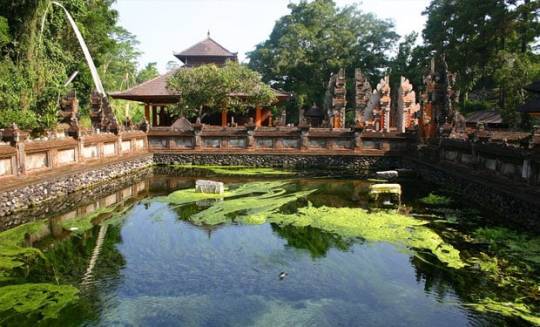
Tampak Siring is a lovely town in central Bali that’s famous for its recognized archaeological sites and breathtaking ancient temples. This former kingdom has been welcoming history enthusiasts and visitors to explore its majestic natural landscapes, sloping hills, verdant greeneries, and man-made architectural wonders.
Guests can also visit the iconic Tirta Empul temple and its natural pools that are built for sacred cleansing rites. Likewise, guests can explore the huge stone relics of Gunung Kawi. This town also houses one of the six presidential palaces. This palace, though, built for the 1950’s President Soekarno is a bit on the modern side, but it nonetheless offers a panoramic view of the nearby Tampaksiring Tirta Empul Temple and the stunning Mount Agung.
youtube
18. Relaxing Things to See and Do in Bali, Indonesia
Menjangan Island

If you’re one of the tourists who flee to Bali to escape the stresses brought upon by technology and the hustle and bustle of their daily routine, then Menjangan should be on top of your itinerary.
A few minutes off the Bali coast in West Bali National Park lies Menjangan Isand, a white-sand gem devoid of any modern day amenities and facilities beyond a simple bathroom and a handful of open-air cottages. Snorkelers and marine life lovers are still drawn to this island because of its pure reef walls veiled in roiling sea fans and soft corals.
There are equipment and gear available on guided tours, as well as a snorkeling operator.
youtube
19. Relaxing Things to Do in Bali, Indonesia
Banjar Hot Springs

It is an established fact that hot springs bring a string of benefits to our bodies. In the hills west of Lovina in Bali, Banjar Hot Springs brings more than that, as its structure is an attraction in its own right. The beautiful dragon-head fountains that supply water to pools that are surrounded by verdant tropical forests and lush palms add another layer of beauty to these hot springs.
There are lockers, a restaurant,, changing rooms, and a simple spa available for the convenience of its guests. Tours are not necessary, since it is fairly easy to book a private driver for the day, or you could just drive over the place from the adjacent Lovina.
youtube
20. Historical Things to See in Bali, Indonesia
Bajra Sandhi Monument
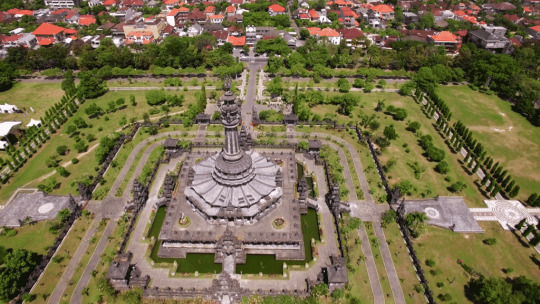
Bali is famous for the natural wonders it has been blessed with, but its man-made architectural beauties do not pale in comparison. One of their famous structures, the Bajra Sandhi monument situated in front of the Governor’s office in Denpasar, is also historically and culturally significant to the people of Bali. It is, a matter of fact, a cultural milestone for the local folks and a big draw for foreign visitors. On the second floor of the building, there is a sequence of dioramas showcasing the unique history of Bali, including several wars and other tribulations that burdened the island and its people throughout the centuries. Those dioramas start from the prehistoric times through the current economic, political, and social state of Bali.
youtube
Bali, too, has had a dark past which reflects poignantly on their culture and arts. Nevertheless, throughout the centuries, Bali has shown that it was, and still is, more than its pretty beaches and ubiquitous stunning temples; it has been also scarred by past tribulations, yet those scars made Bali even more beautiful and irresistible among locals and tourists alike.
Whether you are in for a bit of an adrenaline-pumping adventure or you just want to bask under the glorious Balinese sun, you are sure to be surprised to find more things in Bali that suit your fancy.

#Bali#Bali for couples#bali for first timers#bali with kids#things to do in bali#things to do in Bali in 2019
0 notes